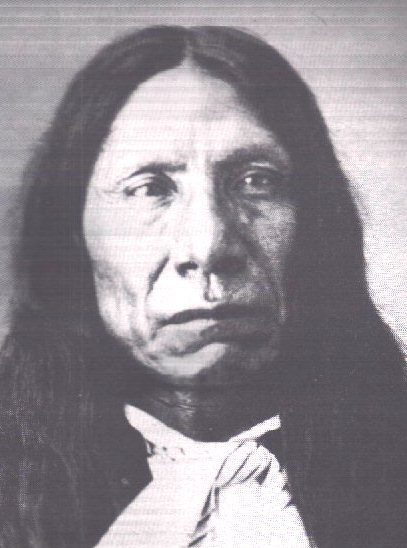

As a warrior and a statesman, Oglala chief Red Cloud's success in confrontations with the United States government marked him as one of the most important Lakota leaders of the nineteenth century.
Although the details of his early life are unclear, Red Cloud was born near the forks of the Platte River, near what is now North Platte, Nebraska. His mother was an Oglala and his father, who died in Red Cloud's youth, was a Brule. Red Cloud was raised in the household of his maternal uncle, Chief Smoke.
Much of Red Cloud's early life was spent at war, first and most often against the neighboring Pawnee and Crow; at times against other Oglala. In 1841, he killed one of his uncle's primary rivals, an event which divided the Oglala for the next fifty years. He gained enormous prominence within the Lakota nation for his leadership in territorial wars against the Pawnees, Crows, Utes, and Shoshones.
Beginning in 1866, Red Cloud led the most successful war against the United States ever fought by an Indian nation. His strategies were so successful that by 1868, the United States government had agreed to the Fort Laramie Treaty. The treaty's remarkable provisions mandated that the United States abandon its forts along the Bozeman Trail and guarantee the Lakota their possession of what is now the Western half of South Dakota, including the Black Hills, along with much of Montana and Wyoming.
Throughout the 1880's, Red Cloud struggled with Pine Ridge Indian Agent Valentine McGillycuddy over the distribution of government food and supplies, and the control of the Indian police force. He was eventually successful in getting McGillycuddy dismissed. Red Cloud cultivated contacts with sympathetic Eastern reformers, especially Thomas A. Bland, and was not above pretending (for political effect) to be more acculturated to white ways than he actually was.
Fearing the Army's presence on his reservation, Red Cloud refrained from endorsing the Ghost Dance movement. And, unlike Sitting Bull and Big Foot, he escaped the Army's occupation unscathed. Thereafter he continued to fight to preserve the authority of chiefs such as himself, opposed leasing Lakota lands to whites, and vainly fought allotment of Indian reservations into individual tracts under the 1887 Dawes Act. He died in 1909, but his long and complex life endures as testimony to the variety of ways in which Native Americans resisted their conquest.
